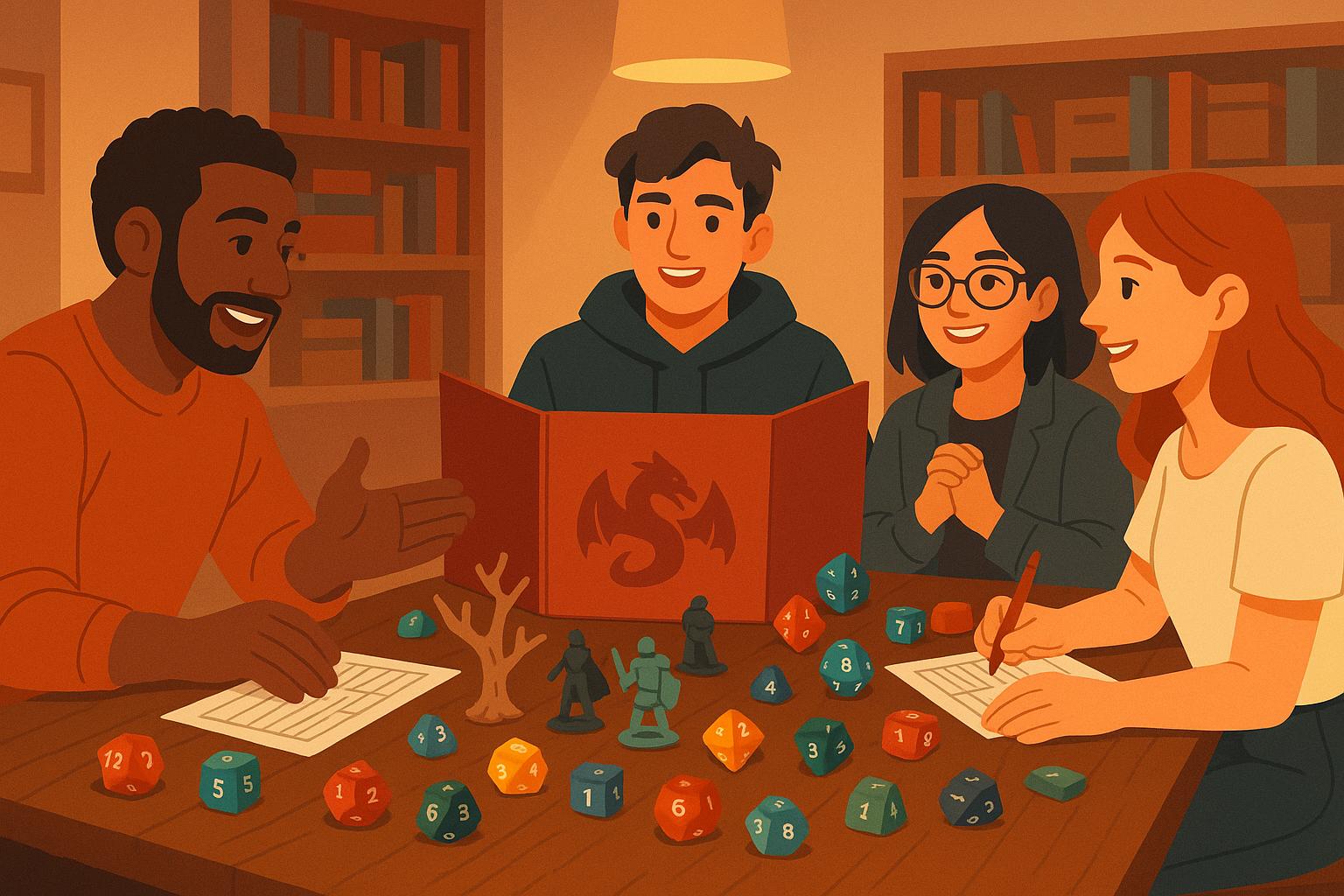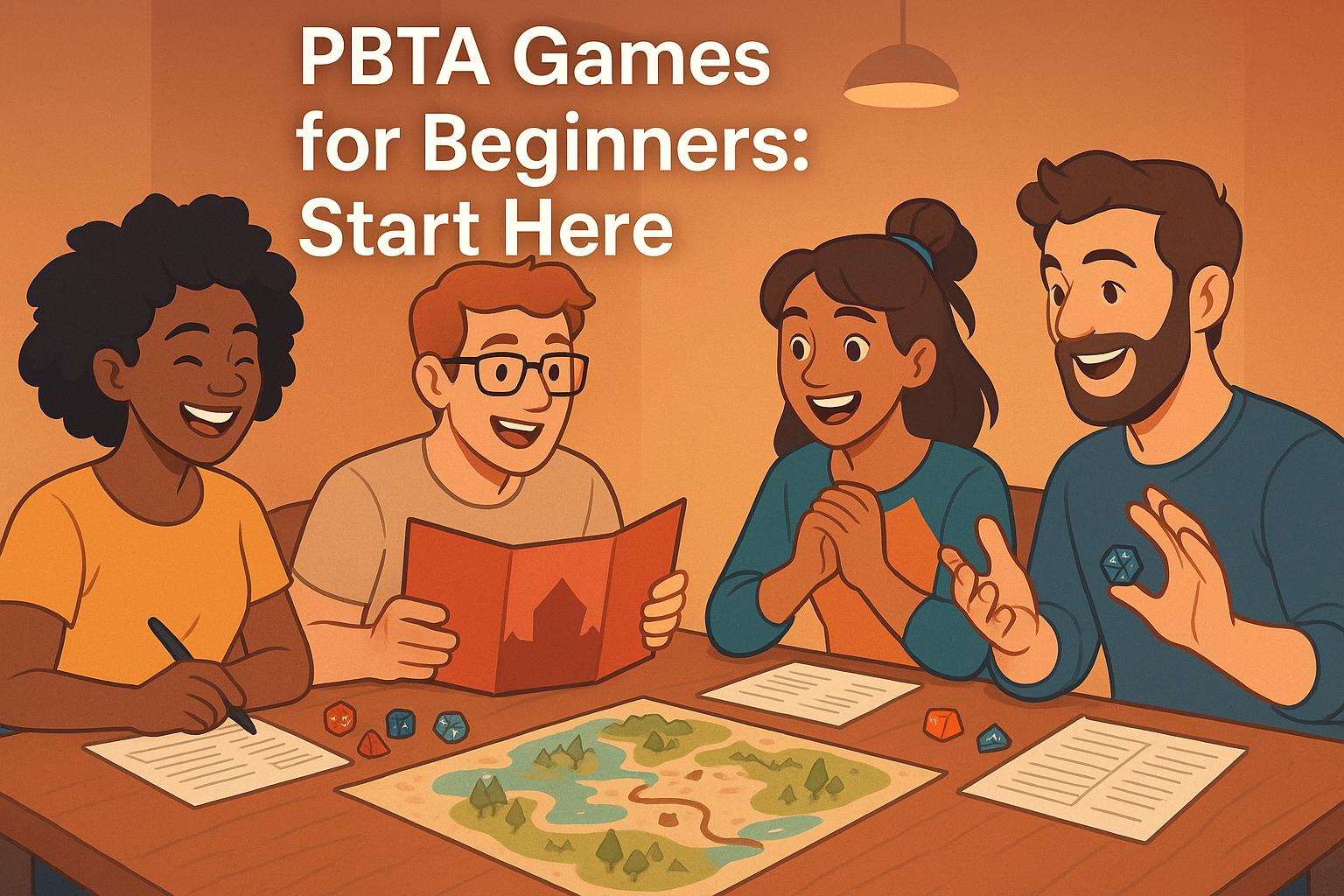Linear plot structures in tabletop role-playing games (TTRPGs) are straightforward storylines where events unfold in a set order. They help Game Masters (GMs) create clear, focused narratives but can limit player freedom. Here's a quick breakdown:
- Pros: Easier GM preparation, consistent pacing, strong story focus.
- Cons: May restrict player choices, risk of "railroading."
Non-linear plots, by contrast, offer player freedom and dynamic storytelling but require more planning and flexibility from GMs. Choosing the right structure depends on your group's preferences and play style.
Quick Comparison
| Aspect | Linear Structure | Non-Linear/Branching Structure |
|---|---|---|
| Story Cohesion | Clear and focused | Multiple storylines, less focus |
| Player Agency | Limited by fixed plot | High, with freedom to explore |
| GM Preparation | Easier, straightforward | Complex, requires adaptability |
| Pacing Control | Tight and predictable | Variable, driven by player actions |
| Information Flow | Structured and direct | Requires multiple uncoverable paths |
Bottom Line: Linear plots are great for beginners or when a clear story is needed. Non-linear plots suit experienced groups seeking more freedom and creativity.
1. Linear Plot Structures
Story Flow
Linear plot structures in TTRPGs follow a straightforward narrative path, making it easier to maintain a consistent story throughout a campaign. This format allows GMs to plan key moments and dramatic events in advance, ensuring the story stays on track and moves at a steady pace. While this can make the story easier for players to follow, it might limit their freedom to explore other directions, which can spark debates about player agency.
Player Choices
Linear plots naturally restrict how much players can influence the story's overall direction. However, a skilled GM can work around this by incorporating player decisions into the narrative. Even if the main plot points are fixed, offering varied ways to resolve scenarios can make players feel like their choices matter.
GM Preparation
One clear benefit of linear plots is how much easier they make preparation for GMs. Since the story is already mapped out, GMs can focus on creating detailed encounters, well-rounded NPCs, and immersive scenes without worrying about juggling multiple potential storylines. This makes linear plots especially appealing for newer GMs who might feel overwhelmed by too many variables.
Here’s a quick breakdown of what GMs should keep in mind when running a linear plot structure:
| Aspect | Key Focus | Tips for GMs |
|---|---|---|
| Story Flow | Keep the narrative moving | Smooth transitions between plot points |
| Player Engagement | Mix structure with choices | Offer flexible ways to resolve events |
| Preparation | Prioritize depth over variety | Build detailed encounters and NPCs |
| Handling Surprises | Plan for unexpected actions | Create adaptable scene elements |
Balancing Structure and Flexibility
Modern GMing approaches, like "prepping situations, not plots", offer a way to keep linear structures flexible. By preparing adaptable scenes or challenges, GMs can let players get creative without losing control of the overall story. This blend of structure and adaptability can create a campaign that feels both cohesive and responsive to player input - but it does require careful planning and execution.
2. Other Narrative Structures (e.g., Non-linear and Branching)
How Non-Linear Narratives Work
Non-linear storytelling offers a fresh way to approach TTRPGs. By using a node-based design, story elements are interconnected, keeping the plot intact even as players explore different directions. This structure allows players to shape their own paths, creating a dynamic and evolving experience. With threaded narratives, multiple storylines can unfold at the same time, adding layers of depth. Unlike linear plots, which follow a single, focused path, non-linear structures open up a world of possibilities for storytelling.
Giving Players More Control
Sandbox-style games give players the freedom to approach quests and challenges in any order they choose. This flexibility lets them influence the game world in meaningful ways, creating a more personalized and interactive experience. The result? Stories that feel alive and responsive to player choices.
Preparing as a Game Master
Running a non-linear game takes careful planning, but the payoff is a richer, more engaging storytelling experience. Here are some key elements GMs should focus on:
| Preparation Element | Purpose | How to Implement |
|---|---|---|
| Scenario Design | Organize the story and empower players | Use interconnected nodes and adaptable scenarios |
| Three-Clue Rule | Ensure smooth information flow | Offer multiple ways to uncover key details |
| Parallel Storylines | Add narrative depth | Create multiple plot threads for players to explore |
This preparation helps keep the story cohesive while allowing for organic player-driven moments. However, non-linear narratives do come with trade-offs - they require more work upfront and can lack the clarity of linear plots. Balancing these challenges is part of the art of storytelling in TTRPGs.
sbb-itb-b8b00a5
How to Build a D&D Plot Web
Advantages and Disadvantages
When comparing linear plot structures to other narrative styles in TTRPGs, each approach comes with its own set of pros and cons for both game masters (GMs) and players. Knowing these differences can help GMs choose the best fit for their campaign and group dynamics.
"If you're playing a roleplaying game then you should play to the strengths of the medium: The magical creativity which only happens when people get together." - Justin Alexander, The Alexandrian
| Aspect | Linear Structure | Non-Linear/Branching Structure |
|---|---|---|
| Story Cohesion | Strong narrative focus, clear progression | Multiple storylines may dilute the main plot |
| Player Agency | Fixed story direction | High freedom of choice and consequences |
| GM Preparation | Easier planning, straightforward execution | Complex preparation, requires flexibility |
| Pacing Control | Tight control over progression | Variable pacing based on player actions |
| Information Flow | Structured and predictable | Multiple paths to uncover details |
| Campaign Length | Predictable duration and milestones | Dependent on player decisions |
Linear structures are great for delivering focused, clear narratives. This makes them especially useful for new GMs or when introducing players to TTRPGs. Their straightforward nature gives players a sense of direction and purpose, which can help keep the game on track.
That said, linear plots can sometimes feel limiting. Players may feel their choices don't matter, leading to a sense of "railroading." GMs can address this by preparing situations rather than rigid events, allowing for a mix of structure and flexibility. Techniques like the Three Clue Rule can help maintain player agency in linear games, as long as they avoid overly steering the players.
For groups interested in exploring different narrative styles, the TTRPG Games Directory offers a range of games tailored to structured or open-ended storytelling. By understanding the strengths and challenges of linear structures, GMs can craft campaigns that align with their group's preferences, ensuring a fun and engaging experience for everyone.
Linear Plot Structures in TTRPGs
Linear plot structures in tabletop role-playing games (TTRPGs) work well when used thoughtfully. Their effectiveness often hinges on the goals of the campaign, the players' experience levels, and the Game Master's (GM's) storytelling style.
For those new to TTRPGs, linear structures offer a reliable starting point. They make it easier to learn the basics of storytelling and game management while keeping the narrative focused and straightforward. This clear structure helps GMs create campaigns that feel cohesive and easy to follow.
To make the most of linear plots, tools like the Three Clue Rule can add balance by giving players a sense of choice while maintaining the structure [1]. The key is to create scenarios that respond to player decisions rather than sticking to rigid, pre-determined events.
If you're seeking inspiration, the TTRPG Games Directory is a great resource. It showcases a variety of games, from tightly structured narratives to open-ended systems, which can help GMs explore different approaches to campaign design.
Ultimately, the best plot structure is the one that fits your group's play style. Whether you lean toward a linear framework or a more open-ended approach, the goal is to create an engaging and memorable experience for everyone at the table.


